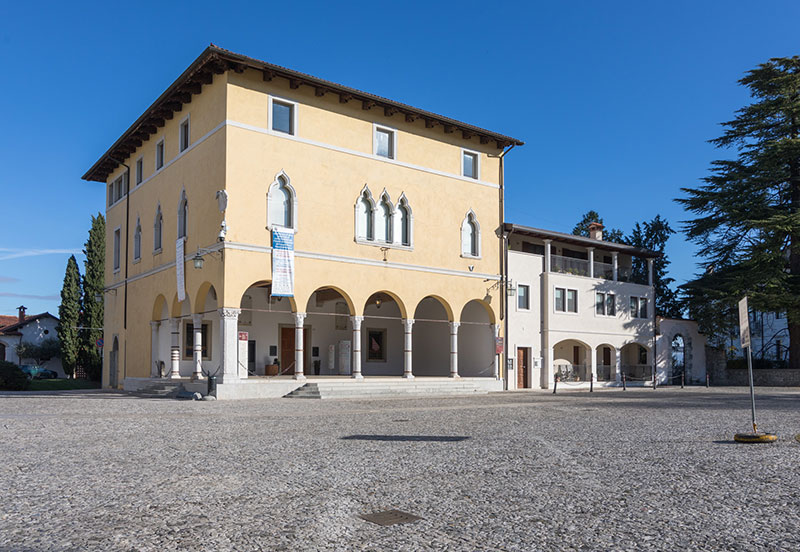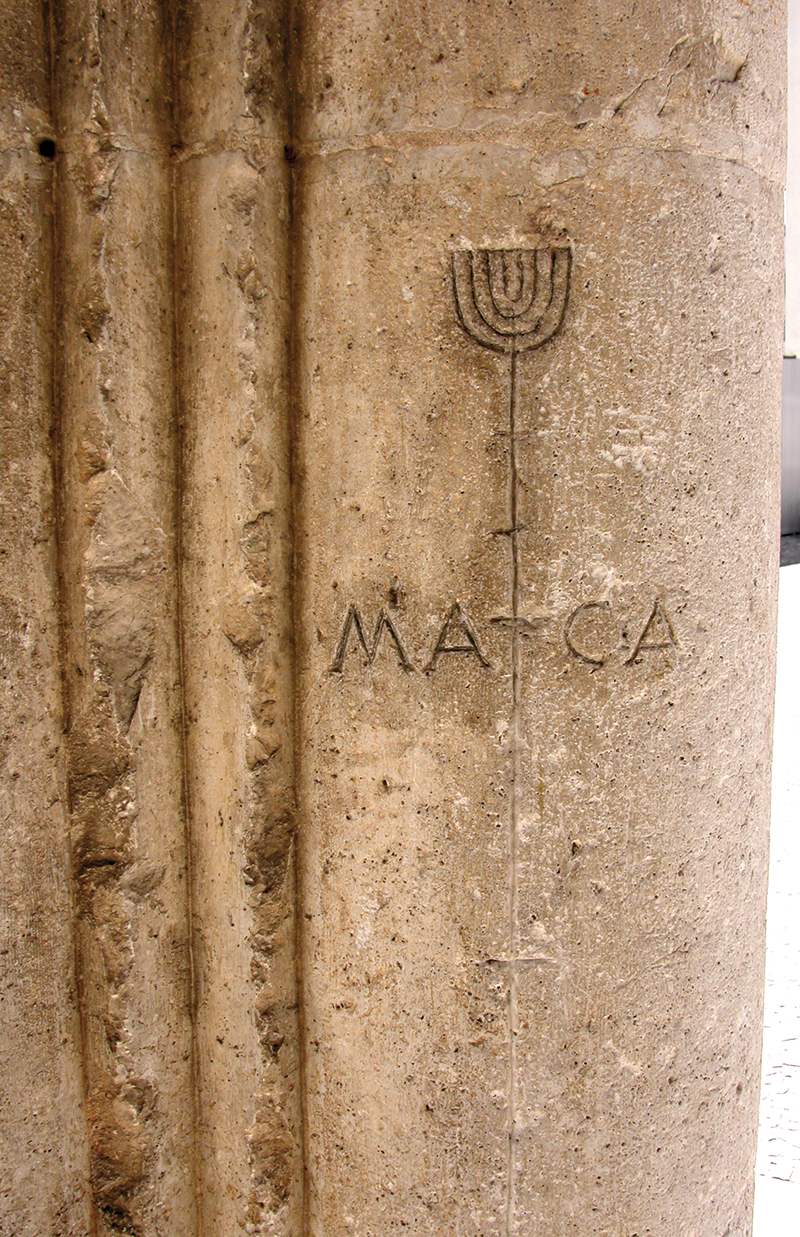
Palazzo la Loggia, aka The Pergola
This Venetian-style building was probably built in the 14th century and it was used by the Lords of Spilimbergo to deal with vassals or gather men of arms. It was a compulsory stop for travellers and merchants who forded the Tagliamento. Throughout the centuries, it has served several purposes, from “domus comunis” to the office for notary deeds, and even a place for legal proceedings. The Counts’ coat of arms is visible in the corner overlooking the piazza. A clear sign that the dominance of the Spilimbergo family was undisputed.
The Pergola later became the Lords’ barn and a place where goods were stored and inspections were carried out. On a column of the portico, you can notice a carved Macia, the ancient unit of length, which was used to check the conformity of sales.
 Palazzo la Loggia was also used as a prison until it was sold to the Drama Society, who turned it into an elegant theatre in 1812. In 1865, another floor was added to accommodate more box seats.
Palazzo la Loggia was also used as a prison until it was sold to the Drama Society, who turned it into an elegant theatre in 1812. In 1865, another floor was added to accommodate more box seats.
The building was restored after the considerable damage caused by the earthquake in 1976.
Now, it has been officially declared an art, culture, and tourism centre. In fact, it houses the Spilimbergo Tourist Office and the Tono Zancaro Collection of Paintings.
The Macia
The Macia was the ancient unit of length for fabrics used in Spilimbergo already in 1438. This historical evidence carved on a pillar of Palazzo la Loggia has given the name to the historical re-enactment that takes place every year. For a few days in August, Spilimbergo travels back in time to the 16th century, when it was one of the main towns of Friuli from a political and cultural point of view. During this event, the town is crowded with commoners trading with merchants, nobles taking a walk wearing their fine clothes, and beggars pleading passers-by for money. Jesters, musicians, fire-eaters, and dancers take to the streets of Spilimbergo while the Count’s guards make sure that no-one disturbs the peace of the Palace.
Other palaces: Palazzo di Sopra | Palazzo del Daziario | Palazzo Ercole | Palazzo Monaco | Palazzo Stella
